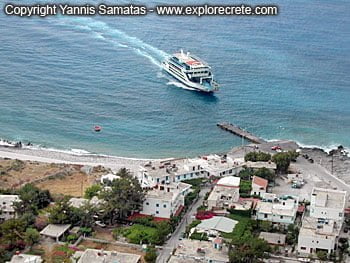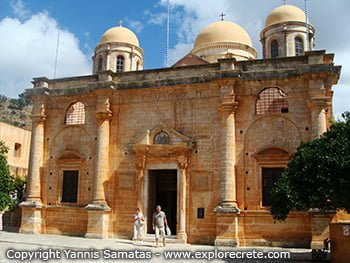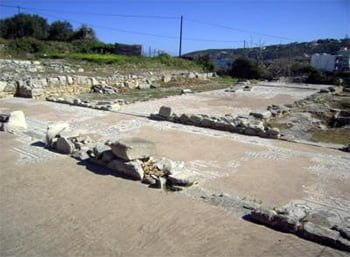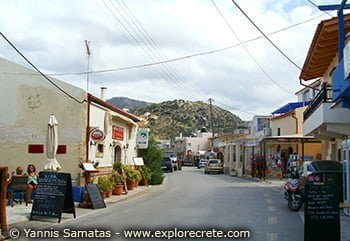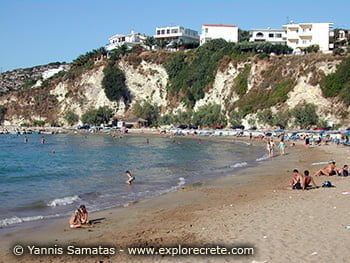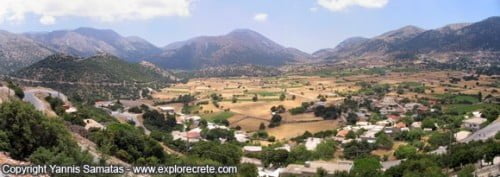History of Falassarna | Ancient Harbour of Falassarna
Falassarna – History
The ancient city of Falassarna (now more usually spelled Falassarna) was a major trading centre, with its own coins bearing the figure of a woman on one side, and the initials ΦΑ (FA) between the points of a trident, symbolic of the area, on the other.
In ancient times Falassarna included the promontory with the hill of the acropolis, above the city harbour.
Νο 1. Church of Agios Georgiosς
Νο 2. Τhe harbour
Νο 3. Τhe main exit channel to the sea
Νο 4. Harbour fortification tower
Νο 5. Auxiliary harbour
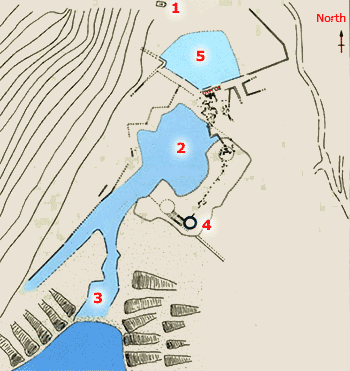
The Harbour of Falassarna
The harbour of Falassarna measured 100 m x 75 m and was the only “closed” harbour in West Crete.
The harbour-builders exploited the local lagoon, digging a channel to the sea 50 m long, 10 m wide and 2 m deep.
The harbour was particularly secure and the city walls extended along the harbour moles, making it a major naval and trading centre.
Falassarna at war with Polyrrhenia
The historian Polybius records an alliance between Falassarna, Cydonia (ancient Chania), Knossos and another 28 Cretan cities against Phaistos and its allies, one of which was Polyrrhenia, the traditional enemy of Falassarna.
The result of the alliance was a hundred years’ war from which Polyrrhenia emerged victorious. The war ended in 186 BC when the Roman Commissioner Appius Claudius ordered the two cities to withdraw and cease hostilities in other parts of Crete.
Falassarna at its peak
The name Falassarna is attributed to the local nymph Falassarne, a sort of local heroine. The city flourished particularly during the 4th and 3rd centuries BC, probably arising from the merger of various small settlements. Excavations in the wider area have shown that it was inhabited from the Early Minoan period onwards, with a settlement at the south end of the beach dating from this time.
The ideal position of Falassarna at the western end of Crete, with a direct maritime link to Alexandria in Egypt, certainly contributed to its prosperity. However, the local sailors did not limit their activities to peaceful trading; like the inhabitants of other coastal cities of the time, they were also particularly fond of piracy.
The fall of Falassarna
History tells us that the Romans were most displeased with the pirates of Falassarna and destroyed the city in 69 BC. In order to prevent the harbour from ever being used as a pirate lair again, they blocked up the entrance with stone blocks, so that only small boats could enter.
The city never managed to overcome this disaster. Even worse, the great earthquake of 365 AD raised the west coast of Crete by 6-9 metres, and the harbour of Falassarna suddenly found itself on land. This is why, if you walk round the archaeological site, you will see that the ruins of the city and its harbour are about 100 metres from the sea.
The Falassarna Archaeological Site
The area was explored in the late 19th century by British travellers, who discovered the harbour and the ruins of the ancient city.
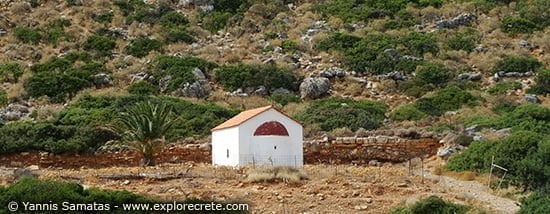
In 1986, the local Ephorate of Antiquities and the Ministry of Culture began excavations and implemented a study to clear the area and promote the archaeological site.
The archaeological site of ancient Falassarna includes the harbour, the acropolis and the cemeteries of the city.
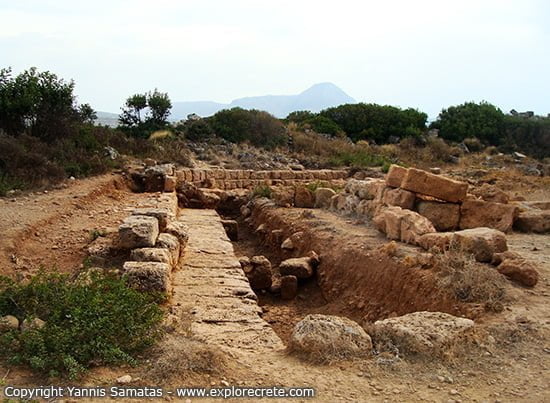
In the harbour area you will see workshops on the northwest, two docks which were once 40 cm above sea level, and two of the four harbour towers, built in 350 BC. The first is circular (4.5 m high and 9 m in diameter), while the second is square.
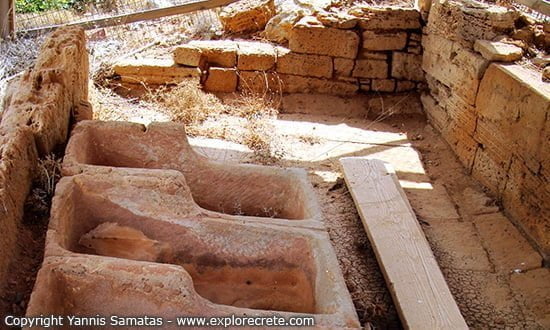
At the top of the promontory, where the acropolis once stood, two temples, cisterns and public buildings have been discovered. The Acropolis was protected by walls with towers and bastions.
East of the harbour is the cemetery of Falassarna, where excavations have revealed 43 cist graves, as well as urn burials.
In the same area is the Falassarna Throne; this was not, however, the seat of the local ruler but probably a podium for public speeches.
© explorecrete.com All Rights Reserved. Reproduction or copying without permission is prohibited.

